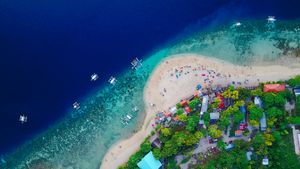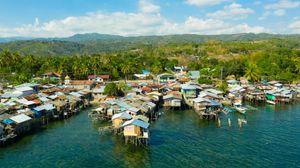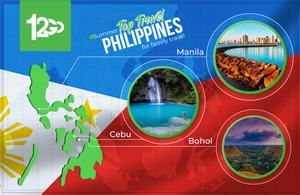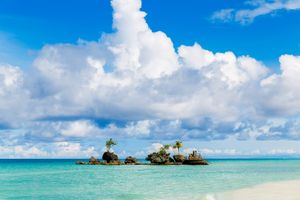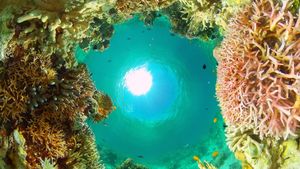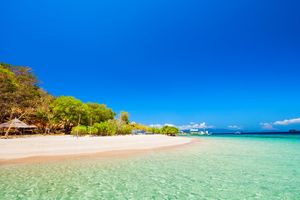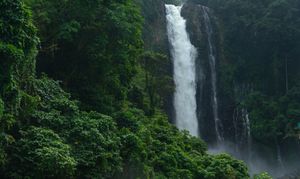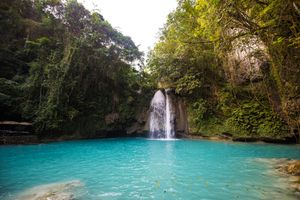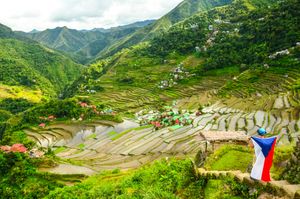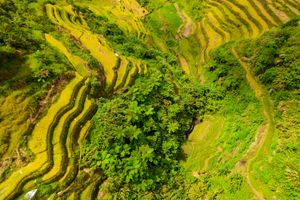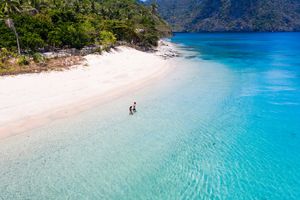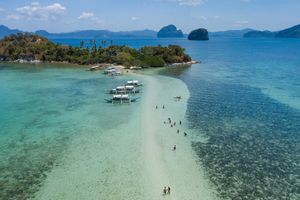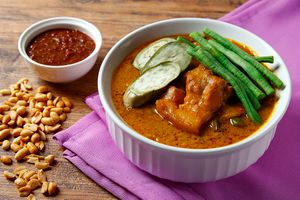The Ultimate Philippines Travel Guide 2024
With 7,107 islands to choose from, the Philippines has everything. The endless variety of scenery and activities caters to an array of travelers and tourists, those with backpacks and those with Louis Vuitton compact purses. The Philippines is a great country to visit in South East Asia. Lush, emerald rice terraces, immaculate beaches, a seething, graffiti-scrawled city, tropical jungles, active volcanoes, and stunning mountains, the Philippines will lure you in, ensnare and captivate.
Why should you visit the Philippines?
A country where East and West blur together in a colorful and unique melting pot. A country where the streets are lined with multi-colored, honking jeepneys, a country where catchy music and karaoke filter out from most street corners. All this, combined with the beaming locals, leaves visitors with a skip in their step and a permanent pop song stuck in their heads.
The Philippines’ marine life paradise
World-class diving opportunities are abundant in the Philippines. As the Philippines make up part of the "coral triangle," more marine species exist here than elsewhere. Exquisite rainbow corals and reefs teeming with glittery, silvery fish set the underworld backdrop for life below the turquoise waves.
The waters abound with marine magic, from gigantic, migrating whale sharks to teeny-tiny bioluminescent plankton. Thresher sharks, pygmy seahorses, giant manta rays, grey and white-tipped reef sharks, sea turtles, and a colorful variety of fish varieties are here in glorious abundance.
Not only are the gorgeous marine life reason enough to try one's hand at diving, but competing for divers' attention are many reefs, walls, and wrecks. WWII shipwrecks, Spanish-era gunboats, and Vietnam-era jet fighters are some of the coral-covered historical wrecks that can be explored. It is a true delight for ocean devotees, professional and amateur divers, and underwater photographers.
The Philippines beaches
We have traveled extensively around the Philippines and taken thousands of photographs. We have filled notebooks with excited scrawls about our own experiences, and heartbreakingly enough, pixels and ink cannot do justice to the beauty of the beaches. We walked around with our jaws on the floor for the first two days of arriving in Coron.
The country also prides itself on having one of the longest white sand coastlines in the world. Warm, crystal-clear water and white powdery sand make you feel like you are casually living out your dreams on the front of a postcard. Exotic, pristine, and magnificent, the beaches of the Philippines are every beach bum's utopia.
With local rum priced cheaper than Coca-Cola, seaside cocktails are affordable and commonplace. Seafood lunches are the order of the day, and many beaches offer relaxing massages right on the sand.
The natural beauty of the country
From dense tropical rainforests to the stunning emerald rice terraces of Batad and Banaue, the diverse scenery and panoramic viewpoints of the Philippines will leave you wide-eyed and speechless.
Awe-inspiring hiking trails along the Filipino mountains and volcanoes offer exquisite sites and cooler mountain air. Travelers craving adventure and those wanting to exert themselves physically will be full of unique trekking options.
However, one can use a pair of hiking boots to enjoy the beautiful landscape. Masses of humbling ocean views of the coast can frequently be found by driving one's rented moped down the road in almost any direction.
And the waterfalls! Oh my goodness, the waterfalls! Kawasan Falls in Oslob, Cebu, has a fairy-tale pool of milky blue water under a thunderous cascade of foamy spray. Tamaraw Waterfalls in Sabang, Palawan; Mimbalot Falls in Iligan City, Mindanao; and Tappiya Falls in Banaue are also majestic and well worth a visit.
The Filipino culture and hospitality
Not only does the nature in the Philippines astound and bedazzle, but the local people are what one remembers most fondly from the trip. Genuine, warm, and unbelievably friendly, the people walk around with toothy smiles and hearts brimming with kindness and hospitality.
The fact that English is widely spoken throughout the Philippines results in an almost zero language barrier. It opens up narratives through which to authentically engage with the people there. Filipinos are humble and enthusiastic storytellers who readily and animatedly share their lives and thoughts with visitors alike.
Best Time to Visit the Philippines
The Philippines’ unique location results in significant climatic diversity. This country has a tropical climate with high temperatures and humidity. When can you expect the best weather in the Philippines?
For the most pleasant weather, plan your trip between November and March. April and May tend to be scorching hot, while June to October brings heavy rainfall, making it less ideal for travel.
Remember that in the Philippines, the dry season typically spans from December to May, while the rainy season lasts from mid-May to November. Interestingly, Palawan stands out as it's seldom affected by typhoons and other natural calamities, regardless of the season.
Palawan remains a year-round destination, with December, January, and February particularly favored. Conversely, September isn't the most conducive time for a visit.
Typhoons in the Philippines
The typhoon season lasts from June to September, but some typhoons can strike as early as May. However, since the Philippines has more than 7000 geographically dispersed islands, typhoons only affect some parts of the country.
These storms typically move from East to West before heading North. The southern islands are less likely to be affected by the typhoon, or at least, weaken. The weather in the Philippines can be unpredictable. The safest regions in this regard may be Mindanao and southern Palawan.
How to get around the Philippines?
Since the Philippines has more than 7,000 islands, it is a country with few trains, so tourist buses are your best choice for getting from city to city. If you're considering island hopping in the Philippines, scheduling a few domestic flights is best. They are cheap and fast.
Many of them pass through Manila. For example, you can get from Manila to Cebu for 55 US dollars. Philippine Airlines, Cebu Pacific Airlines, and Philippines AirAsia are leading carriers of domestic flights. Smaller airlines operate throughout the country, usually on more specialized routes. Dozens of ferry companies also operate between islands across the country.
Jeepneys are old military jeeps left over from the American occupation of the Philippines that have since been converted into colorful, unique private buses. They're cheap, they're everywhere, and they're probably the most popular form of public transportation in the Philippines. Walking is also an option for short distances, but the humid climate and some iffy areas make this the least recommended option.
Taxi in the Philippines
Regular taxis are metered and air-conditioned. Taxi booking apps like Grab are available in the Philippines. The price ranges from PHP 180 to PHP 240, depending on where you are heading in Metro Manila. Airport taxis have yellow meters and are 50% more expensive than regular taxis, but they are the only metered taxi company authorized to operate.
Where to travel in the Philippines?
With all the beautiful destinations in the Philippines, the most challenging aspect of the trip is choosing which places are must-see material. Expect a lot of research involved. A lot of word-of-mouth. A lot of trial and error. You have not seen the Philippines without visiting...
Banaue and Batad in Luzon
Though we can somewhat agree with the travelers who tend to skip Manila, using it just as a hub on their way to the islands, failing to include Luzon in your travel itinerary is a huge mistake.
And we are 100% sure you will confidently tell us that the rice terraces in Banaue cut. Described as the world's eighth wonder, these glistening, emerald stairs create a unique sight. Banaue and nearby Batad offer hiking trails that greatly reward the sweaty efforts of visitors, as well as astounding viewpoints and beautiful waterfalls. Since visiting, we have only partially looked at the pre-packaged rice that adorns supermarkets worldwide in quite the same way.
Palawan Island
Puerto Princesa. With its delicious food, white sandy beaches, and jaw-dropping coastal viewpoints, Puerto Princesa, the capital city of Palawan, is always an exceptional experience. Sunrise dolphin tours, ethical snorkeling with wild whale sharks, evening bioluminescent plankton, and firefly kayaking excursions – this city is a sheer delight. Do not be surprised if you decide to extend your stay in Puerto. Maybe even twice! The new Seven Wonders of Nature also includes the underground river. It was an all-around excellent experience!
Coron. With its impeccable beaches, crystal clear ocean (one can view sunken Japanese Warships when snorkeling), and almost untouched natural environment, Coron is also not to be missed. Voted by Forbes Traveler Magazine as one of the top diving sites in the world, this natural gem offers unique treasures for divers, snorkelers, island hoppers, beach bums, hikers, and foodies. From professional photographers to selfie-stick-wielding YOLOers, this exceptionally gorgeous setting is inspiring for all.
San Vicente has Long Beach, a stunning stretch of pristine white sand extending approximately 14 kilometers. This uncrowded and relatively undeveloped beach provides an idyllic setting for sunbathing, swimming, beachcombing, and enjoying breathtaking sunsets.
El Nido. Known for its white sand beaches, turquoise waters, coral reefs, and stunning limestone rock formations similar to Ha Long Bay in Vietnam or Phang Nga Bay in Thailand, El Nido is arguably one of the most popular resort destinations in the Philippines. El Nido is the gateway to the spectacular Bacuit Archipelago. There are plenty of things to do in El Nido, including island hopping around El Nido, relaxing on the beaches, rock climbing, and even scuba diving.
Mindanao
Mindanao, the second largest island in the Philippines, located in the southern part of the archipelago. The most popular attraction here is white-water rafting along the Cagayan de Oro River. Cagayan de Oro’s weather fares well throughout the year. If you are planning to come here for a couple of days, the best choice is to fly. Surrounding Cagayan de Oro are several natural wonders worth exploring.
Here you can also find the majestic Maria Cristina Falls, often considered the queen of Philippine Waterfalls. Located in neighboring Iligan City, the falls cascade down a height of over 320 feet surrounded by green landscape.
Baguio
Baguio tourist attractions include Burnham Park, which is ideal for outdoor activities. Mines View Park offers scenic vistas and horseback riding, and The Mansion is the President's summer residence. We recommend exploring Camp John Hay for golfing and hiking or Wright Park for its iconic horse-shaped pool and horseback riding.
For example, Session Road offers fantastic shopping and dining, while Baguio Cathedral provides insight into the city's religious heritage. For cultural immersion, Tam-awan Village showcases traditional architecture and artworks, and art, you can explore the BenCab Museum.
Cebu
This is an excellent place to start exploring the Philippines, as you can visit other nearby areas. The Mactan-Cebu International Airport is located here, making it accessible to domestic travelers and foreigners. There are also many historical, cultural, and religious sites that you can visit during your Cebu City Tour. For example, the Cebu Temple of Leah.
Cebu also has several waterfalls, the most popular of which is Kawasan Falls in Badian, where you can go canyoning. The refreshing turquoise waters of Cebu's many waterfalls are a great place to dip on a hot day.
Negros
Negros is a large island in the Visayas, a group of islands that makes up roughly the central third of the Philippines. It is home to the highest peak in the Visayas, the semi-active Kanlaon Volcano. The province allows you to stroll through rustic and sophisticated streets, sip coffee on the mountainside, see waterfalls, and explore its terrestrial natural resources. It is widely known as the sugar capital of the Philippines and the site of the Masskara festival held annually in the "City of Smiles," Bacolod City.
Negros is also famous for several local cultural events, the most popular of which is the MassKara Festival, which is celebrated annually every October. Explore the historic Silliman University in Dumaguete City and the vibrant MassKara Festival in Bacolod City. Experience the natural beauty of Apo Island's coral reefs and marine life, and unwind at Mambukal Mountain Resort with its hot springs and hiking trails.
Panglao
Panglao is a beautiful island in the northern Bohol Sea, located in the Central Visayas region. Panglao Island is the best beach destination in Bohol.
Most of the best hotels and resorts in Bohol are located on Panglao Island. Alona Beach is the best beach destination on the island, with the most luxury hotels, restaurants, and bars. The Alona Beach is known for its long white sand and clear water.
In Panglao Island, Philippines, enjoy beach hopping, island hopping, scuba diving, dolphin watching. Explore Hinagdanan Cave, visit Bohol Bee Farm, and relax on its pristine beaches.
Traveling around the Philippines
Accommodation and transport are well-priced and easily affordable for most tourists and backpackers. Visiting the Philippines is an economical option if one wants to travel on a budget. Staying in accommodation just outside the heart of most tourist hotspots dramatically reduces the prices of Filipino lodging preferences.
Additionally, the most affordable places to rest at night are often not found online when backpacking around the islands. Walking around upon arrival and not pre-booking a room can offer significant savings for the determined and dedicated tourist.
With all the markets and abundant street food, eating cheaply is not only a realistic alternative to dining out but is tasty and culturally rewarding.
The city has several national parks, nature reserves, and protected areas. Davao City is famous for Mount Apo, the highest peak in the Philippines at over 9,600 feet. The Eden Nature Park is also a nature reserve with gardens, pine forests, and various outdoor activities, including trail riding, trekking, and horse riding. Davao City has coastal roads, cafes, and coffee shops. When you are at the center, why not visit the Philippine Eagle Center or Crocodile Park?
If you have more than two days in Davao, consider visiting Samal Island, just a short ferry ride from the city, which offers stunning beaches, waterfalls, and scenic views. You can also find waterfalls such as Aliwagwag Falls, Davao East, Hagimit Falls, which has a lovely natural pool, and Tudaya Falls in the middle of the dense forest.
Where to go in the Philippines if you like...
Diving and snorkeling
No matter your interests, passions, or pastimes, the Philippines has you covered. With the wealth of marine life in even the shallow waters, snorkeling is a delightful way to spend leisure time holidaying or traveling in the Philippines. For intimate and frequent sea turtle encounters, one should head to Apo Island for a day trip or, ideally, a few nights. Many destinations in the Philippines are famous for their whale shark encounters, but our favorite whale shark snorkeling spot is in Puerto Princesa. It's ethical and isn't overly commercialized.
If you love shipwrecks, vivid corals, and stunning fish, head to Coron. The top snorkeling locations are Matinloc Island in El Nido and Balicasag Island in Bohol.
Another thriving water-based activity in the Philippines is diving, and fortunately enough, spotting Nemos and Dorys can be enjoyed year-round. The deep waters abound with flourishing sea life, excellent for professionals and beginners. Thresher sharks, hammerhead sharks, giant mantas, and sunken WWII shipwrecks are yours for viewing.
Diving highlights include the UNESCO World Heritage site of Tubbataha, the photographic wrecks of Busuang, and thresher sharks at Monad Shoal, Malapasqua.
No matter your interests, passions, or pastimes, the Philippines has got you covered. At the coral-encrusted deep wall in Yapak, Boracay, one can also dive with white and grey-tip reef sharks, eagle rays, and synchronized schools of tuna. Also, the world-renowned sardine run occurs in Moalboal, Cebu, and, fortunately enough, can be experienced year-round.
Hiking in the Philippines
If submerging in seawater for extended periods isn't your thing, fear not. Hiking is another popular activity to satisfy your adventurous heart. From the rice terraces of bountiful Banaue to the active Mayon Volcano on the island of Luzon, one can take out a pencil and tick items boldly off your traveling bucket list.
Straight off the set of Jurassic Park is Mount. Manalmon, situated in San Miguel, Bulacan. This is an excellent hike for beginners or those with limited time, as it only takes an hour to conquer the picturesque summit. A more challenging climb is Mount. Tibig, found in Lobo, Batangas. This hike promises a glorious sunset, and camping options are available at the top, too.
Ifugao Rice Terraces
For 2,000 years, the Ifugao province in the Philippines carefully cultivated its mountains with terraced fields. These terraces, sculpted from stone and clay, adapt to the hill's contours and prove ancient engineering. Terraces were first built as a practical solution to the problem of growing rice on land. They irrigate their rice crops sustainably using water collected from mountain forests.
The Ifugao Rice Terraces in the Philippine Islands are among the most famous agricultural structures in the world and have been a UNESCO World Heritage Site since 1995. The most popular place to see the rice terraces is the Sunrise Viewpoint, where members of the local Igarot tribe pose for photographs and sell wood carvings.
Banaue Rice Terraces.
But you can also walk along the paths through the rice fields, the banks of which are sprinkled with scarlet wildflowers, which contrast effectively with the bright greenery of the rice plantings.
Chocolate Hills
The Chocolate Hills are a cluster of uniquely formed hills in the heart of Bohol Island, Philippines. Approximately 1,268 hills comprise this natural wonder. Among the captivating local tales, one recounts a mythical battle between giants who reconciled in exhaustion after days of hurling earth and stones, embracing each other as friends once more.
Rain and other natural water sources gradually created the sinkholes and valleys for which the island became so famous. The hills are most easily reached by taking a two-hour ferry ride from Cebu to Tagbilaran, the capital of Bohol.
Island-hopping
World-famous island-hopping tours are scattered in great masses across the Philippines. Spend a day out at sea, stopping to admire the many views, snorkel with fish and multi-colored corals at various stops, grab a fresh coconut on an island stopover, and enjoy a tasty, local lunch with sand between your toes.
Island-hopping with Filipino tour operators is a tropical delight. Palawan, Coron, and El Nido offer excellent island hopping packages with bewitching lagoons, prehistoric caves, towering cliffs, and mangrove forests. Siargao Island offers more than just spectacular surfing. One can visit Naked Island, Daku Island, Guyam Island, and even Sohonton Caves on an island-hopping adventure off the coast.
Festivals and celebrations in the Philippines
Festivals, fiestas and celebrations! Oh, what a spectacle! The local people show constant gratitude to their patron saints and generous harvests by celebrating with elaborate style and sparkling pizazz.
Filipinos take their festivals very seriously, lasting from day to month. Since there's at least one festival going on somewhere every month, timing your holiday to collide with one of them is of little concern. Music, costumes, dancing, face paint, confetti, and glitter move in a pulsing wave down streets and alleys, inviting all to participate in the glitz and glamor.
Filipino Independence Day
The Declaration of Philippine Independence was proclaimed by General Emilio Aguinaldo of the Philippine Revolutionary Forces on June 12, 1898. It reaffirmed the sovereignty and independence of the Philippine Islands during 300 years of Spanish colonial rule. The Philippine flag was first unfurled on this day on June 12, 1898, in an inspiring celebration that also included the first public performance of the Philippine national anthem.
Whale sharks in the Philippines
If you want to visit places in the Philippines where you can swim with whale sharks, two notable destinations are Donsol and Oslob.
Donsol is rightfully called the "Whale Shark Capital of the World." Located in the province of Sorsogon, Donsol offers visitors the chance to swim alongside whale sharks in their natural habitat. The best time to visit Donsol for whale shark encounters is typically from November to June, with peak season occurring from February to May.
Oslob is another place to watch whale sharks in Asia. Although controversial due to the feeding methods used to attract whale sharks, Oslob remains a significant tourist attraction for those looking to get up close and personal with these gentle giants. Whale shark encounters in Oslob are available all year round.
Philippines Travel Itinerary
Day 1-2: Begin your journey in Manila, exploring its streets and historical sites. Take a guided tour through Intramuros and sample local delicacies at Mercato Centrale.
Day 3-6: Travel to Boracay conveniently by bus or flight. Relax on Boracay's famous White Beach, try kiteboarding, and witness a stunning sunset at Puka Beach. Book your tickets from Manila to Boracay.
Day 6-8: Take a ferry from Boracay to Cebu; you can book the tickets through 12Go. Explore Cebu City's historical landmarks before embarking on a day trip to Oslob to swim with whale sharks.
Day 9-12: Travel from Cebu to Bohol via ferry. Marvel at the Chocolate Hills, encounter tarsiers in their natural habitat, and cruise along the Loboc River.
Day 13-15: If you have extra days to enjoy your trip to the Philippines, fly from Bohol to Siargao. Enjoy Siargao's laid-back vibe, surf Cloud 9, and island-hop to secluded beaches.
Day 16: Return to Manila via a flight booked through 12Go. Spend your last days souvenir shopping in Greenhills or exploring the vibrant nightlife of Makati before heading home.
Budget for the Philippines
The Philippines is one of the countries that top the list of cheap destinations to travel to. Planning a budget for the Philippines depends on what you want to do. You can find affordable places to stay and eat, but activities like visiting attractions or trying adventure sports can add up. Setting aside money for each day and adjusting based on what you want to do is wise.
Accommodation options range from $10 to $100 per night, while local transportation and street food offer affordable options. Plan for additional expenses like entrance fees to attractions, averaging $1 to $10, and adventure activities ranging from $20 to $100. Setting aside $30 to $50 per day for backpackers and budget travelers, $50 to $100 for mid-range travelers, and $100 or more for luxury travelers is a good guideline.
What to eat in the Philippines?
Filipino cuisine is usually overlooked when compared to other Southeast Asian cuisines such as Thai or Vietnamese. It was influenced by Malay, Austronesian, Chinese, Spanish, and American culinary traditions. Filipino cuisine is incredibly diverse, with each region's specialty dishes and ingredients. For example, Bicolano cuisine from the Bicol region is known for its spicy dishes. In contrast, Ilocano cuisine from the Ilocos region features hearty and savory dishes made with ingredients like bagoong (fermented fish paste) and so on.
No list of the best Filipino dishes can begin without the famous adobo.
Chicken Adobo
Philippine Chicken Adobo is the national dish of the Philippines. The national dish of the Philippines is traditionally made from a whole chicken or chicken legs and thighs with bones, which are simmered in a mixture of lots of soy sauce, vinegar, bay leaves, garlic, and black pepper. This dish is usually served with steamed rice and sometimes boiled eggs or vegetables.
Sinigang
Often associated with tamarind, sinigang is a traditional Filipino food that is sour and savory. This tart soup is hearty and refreshing, with plenty of vegetables and firm meat. Its versatility allows for different souring agents and protein options, making it a staple in Filipino cuisine.
Sinigang is a Filipino sour soup perfect for chilly evenings or festive gatherings. Its delicious aroma and flavors make it a comforting dish celebrating Filipino cuisine's rich heritage. It's a dish meant to be shared and enjoyed together, bringing people closer through the joy of communal dining.
Kare Kare
Filippino’s favorite dish, Kare-kare, is usually paired with a base of oxtail, braised beef, and pork butt. Traditionally, select meats are cooked for hours until desired tenderness and, along with various vegetables such as banana cores, long beans, and eggplant, are mixed into a stew with ground peanuts for flavor and toasted milled rice for thickness.
Kare-kare is a thick oxtail and beef stew with peanut butter simmered for over two hours. It features a cornucopia of tender vegetables and steaming white rice.
Tips for traveling in the Philippines
- Wear modest clothing, especially when visiting religious sites.
- Remove shoes before entering someone's home or place of worship.
- Use jeepneys and tricycles in cities and towns.
- Travel using buses and vans for intercity travel.
- Be careful about pickpocketing, especially in crowded places.
- Avoid drinking tap water.
- Book in advance or during the off-season.
- For traveling in the Philippines, you can use these government websites:
1) The Department of Tourism - official tourism website that provides information on destinations, attractions, and travel advisories.
2) Bureau of Immigration - official website for immigration services and visa information.
3) Civil Aviation Authority of the Philippines - oversees air travel and provides flight information and regulations.
4) Department of Transportation - oversees transportation policies and regulations, including land, air, and sea travel.
FAQ:
How to get to the Philippines?
To get to the Philippines, you should book a flight to Manila or other significant airports with airlines like Philippine Airlines or Cebu Pacific. Check visa requirements, pack essentials, and enjoy your flight, remembering to comply with travel advisories or health protocols.
Where to travel in the Philippines?
Explore the Philippines' diverse destinations, such as Palawan for the best beaches and Boracay for nightlife and white sands. Include Siargao for surfing and island hopping and Cebu for history and diving, while also considering Bohol for the Chocolate Hills and Manila for cultural landmarks and cuisine.
What is the currency in the Philippines?
The currency in the Philippines is the Philippine Peso (PHP), often denoted by the symbol ₱.
Is the Philippines cheaper than Thailand?
The cost of living in the Philippines is generally lower compared to Thailand, especially when it comes to accommodation, food, and transportation. However, expenses can vary depending on the region and activities.
What is the Philippine’s language?
The Philippines has two official languages: Filipino and English. Filipino is used nationally, while English is widely spoken and understood, particularly in business and tourism.
Do I need travel insurance in the Philippines?
Travel insurance isn’t required in the Philippines but can provide financial protection for unexpected events like medical emergencies or lost luggage. Whether you need it depends on your trip and your comfort with risk.

